There’s a lot to keep track of while flying. You need to make sure you have the right documents, keep your luggage within the size and weight limits, and figure out how to stay comfortable on the plane.
If you’re a first-time flier, navigating the airport, going through security, and getting on the plane might feel intimidating. Fortunately, with a little bit of preparation, your first flight can be straightforward, stress-free, and even exciting.
I’ve flown all around the world, from short hops for business trips to long-haul flights to the other side of the globe. In fifteen years of travel, I’ve taken hundreds of flights with airlines ranging from Delta to Singapore Air. I’ve traveled light with just a personal item and heavy with multiple checked bags. Over the years, I’ve learned many essential dos and don’ts, as well as a few lesser-known travel tips to make flying more comfortable and enjoyable.
I’ll walk you through the entire process, from buying your tickets to settling into your seat. When you’re done reading, you’ll feel ready to tackle your first flight with confidence.
Before You Fly
Before you embark on your first journey by air, a bit of preparation will help ensure that your flight experience is smooth, stress-free, and enjoyable. From packing smart to getting familiar with your flight details, a little planning goes a long way.
Research the Airline and Flight Details
A good flight experience starts with research to find the right flight at the right price. Tap into flight booking websites and search engines like Skyscanner or Google Flights, which can simplify your search for the best fare deals.
Keep a keen eye on, not just the price, but also the layovers, flight duration, and departure times. Direct flights are faster and more convenient, but they also often cost more. By doing your research ahead of time, you can find the best flights without blowing your budget. Typically, the best time to book a flight is 1-3 months in advance.
Double Check Luggage Size and Weight Limits
Save yourself from any last-minute airport hassles by taking a moment to check your airline’s rules on luggage size and weight limits beforehand. It’s important to remember that carry-on bags and personal items have specific restrictions, and going over those limits can result in expensive fees.
Keep in mind that weight and size restrictions can vary between airlines, especially budget carriers, which tend to have stricter guidelines. It’s always a good idea to double-check the limits and measure your luggage to make sure it fits.
Make Sure You Have the Right Documents
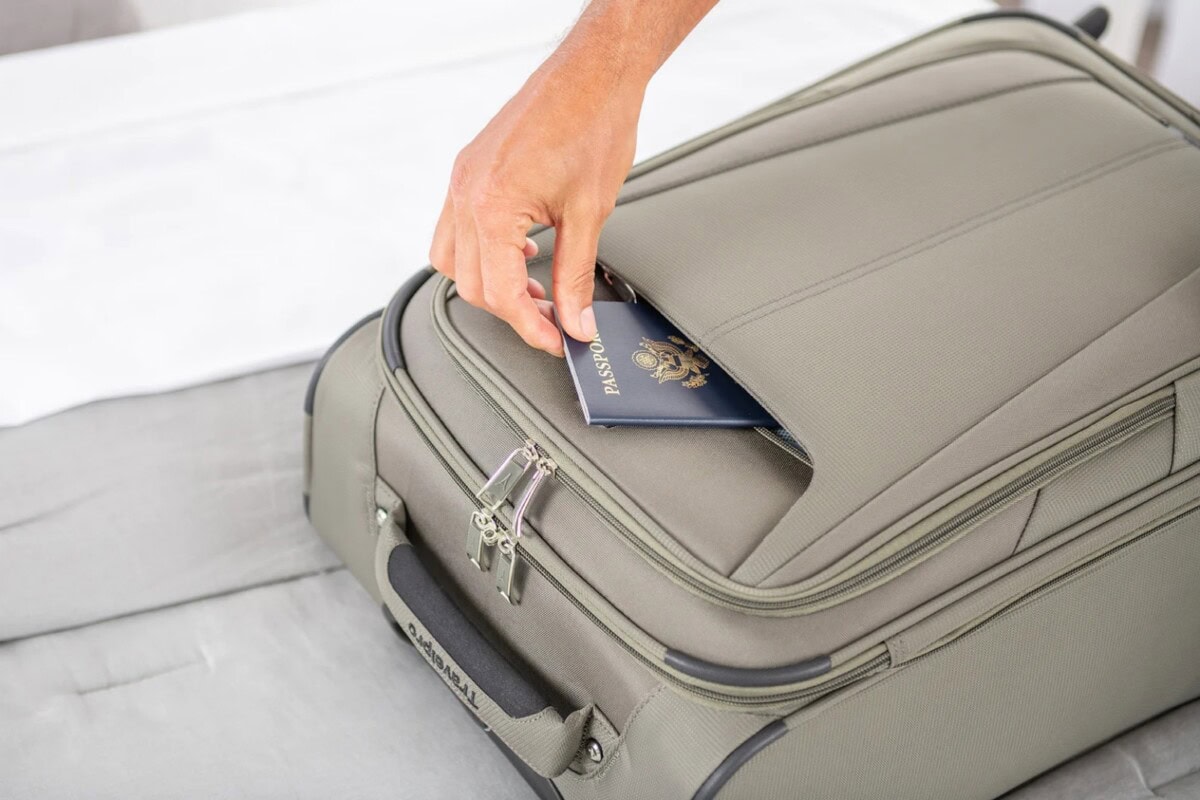
Travel documents are your ticket to smooth sailing—or flying, in this case. For international flights, ensure your passport is valid for at least six months beyond your travel date. For domestic flights, you need a valid driver’s license or other ID.
Equally important is travel insurance; be sure to print out the details, such as the policy documents and emergency contact numbers. Keep these and other identification documents handy—you never know when you’ll need to present them.
Notify Your Bank of Your Travel Plans
Don’t let the inconvenience of a frozen bank account ruin your trip! Remember to inform your bank about your travel plans in advance. Thankfully, most banks make it super easy to let them know through their user-friendly app or website, especially if you pick a specific bank account for travelers.
By doing so, you can avoid any potential fraud alerts that might lock your credit cards when they detect foreign transactions. So, take a few minutes to notify your bank and enjoy your trip worry-free!
Dress Comfortably
The key to a comfy flight is the right travel clothing. Choose garments that are loose-fitting and breathable, and easy-to-remove travel shoes will make going through security easier.
Remember, comfort above all ensures a more pleasant flight. This isn’t the time to wear your eight-inch heels or stiff dress pants.
Pack Essential Items in Your Personal Item
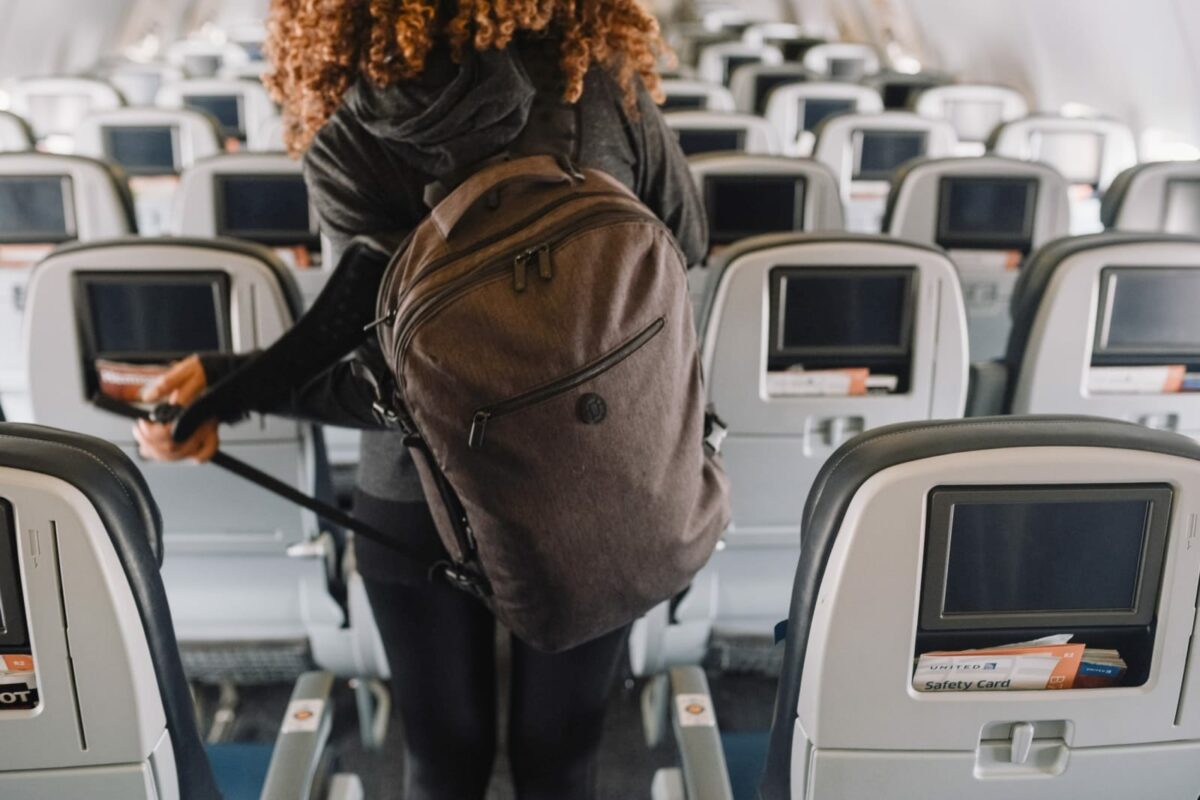

A personal item on a flight is a small bag, such as a handbag, laptop case, or small backpack, that you can store under the seat in front of you during your flight.
Use it to stash away travel essentials: your wallet, travel documents, earphones, a water bottle, some snacks for the trip, and a book or tablet for entertainment. Getting all your stuff organized ahead of time ensures you’ve got everything you need right at your fingertips when you need it.
At the Airport
Airports can be busy and overwhelming. There’s a lot to think about: checking your bags, getting through security, and not getting lost in the maze of terminals. By knowing what to expect, you can cut down on anxiety and navigate the airport with confidence.
Check In Online
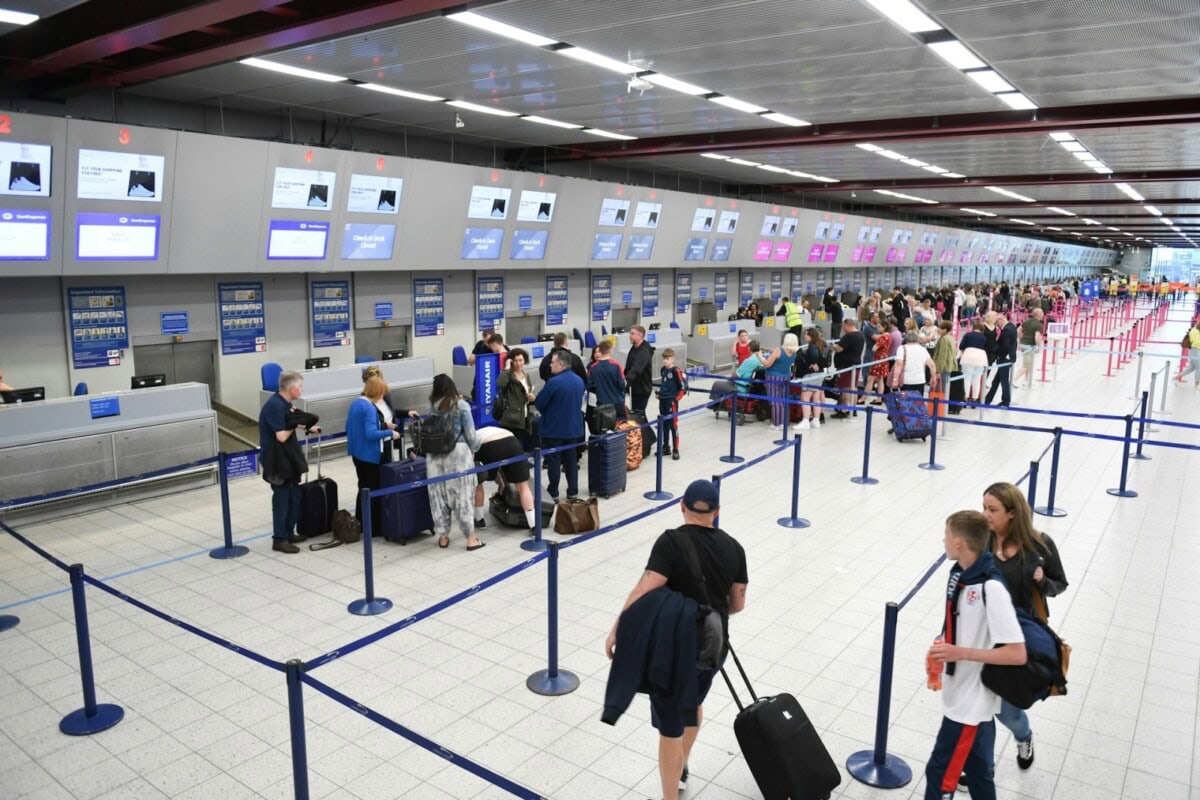

To make your flying experience even smoother, it’s a great idea to take advantage of online check-in. Most airlines make online check-in available 24 hours before your flight, which allows you to skip the long lines at the airport counters.
Downloading your airline’s mobile app is usually the easiest way to check in online.
Not only will it save you precious time, but it also gives you the chance to select a better seat. Plus, you’ll receive a digital boarding pass right on your smartphone, which includes all the important flight details like the gate and seat numbers. How convenient is that?
Arrive at the Airport with Plenty of Time
Arriving at the airport early is always a good idea, especially for first-time flyers. Airlines generally advise getting to the airport at least three hours ahead for international flights, and two hours for domestic travels. This timeframe is especially important if you’re heading to the airport during busy holidays, have lots of bags to check, or are traveling with kids.
An unhurried pace means less stress and allows time for any unexpected delays. Remember, boarding usually begins 45 minutes before takeoff, and gates typically close 10-15 minutes prior to departure—another reason why those extra hours can make all the difference.
Empty Water Bottles Before Going Through Security
Staying hydrated is important, but don’t forget that airport security mandates empty water bottles. Rather than chugging your drink hurriedly in the security line, it’s best to finish or empty your bottle beforehand. It would be a shame to have the TSA confiscate your favorite water bottle just because it isn’t totally empty!
Just make sure to empty your water bottle before going through security, and you can easily refill it once you’re in the airside area where there are plenty of water fountains available.
Find Your Gate Early
Once you’re through security, head straight to your gate. Some airports can be a bit confusing to navigate, so it’s a good idea to find your gate as soon as possible. This way, you can avoid any unnecessary stress and be ready for boarding when the time comes.
Once you know where you need to be, you can take your time to enjoy a meal, do some shopping, or simply unwind before your flight.
Use the Bathroom Before Boarding
Before you board, make a quick pit stop at the restroom. Airplanes typically only allow passengers to use the facilities once the aircraft has reached cruising altitude — which could be a while after takeoff.
Make sure you hit the bathroom before boarding so you can have a more comfortable start to your time in the air.
During the Flight
Embarking on a flight, especially for the first time, involves more than just buckling your seatbelt and awaiting arrival. To ensure a pleasant and comfortable journey, consider the following practices during your time in the sky.
Stay Hydrated
Staying hydrated is super important during your flight! The high altitude and dry air in the cabin can really dry you out, so it’s essential to drink plenty of water before, during, and after your flight to keep your body happy and hydrated.
Don’t forget to refill your water bottle after going through security! It’s a great way to stay hydrated during your journey without spending extra money. Drinking water regularly can help you feel relaxed and comfortable, and even improve your sleep quality on the plane.
Start to Adjust to Your New Time Zone
Long flights often mean crossing through different time zones, and adjusting your internal clock while in the air can reduce the effects of jet lag. Simple actions like setting your watch or phone to the time zone of your destination can mentally prepare you for the change. You can also use an app like Timeshifter to help adjust and avoid jet lag.
Get a head start on adjusting to the new time zone by mimicking the nighttime of your destination. If it’s night there, take advantage of eyeshades and earplugs to get some sleep on the plane. This proactive tactic helps your body ease into the new schedule, giving you a better chance of feeling refreshed when you land.
Bring Your Own Entertainment
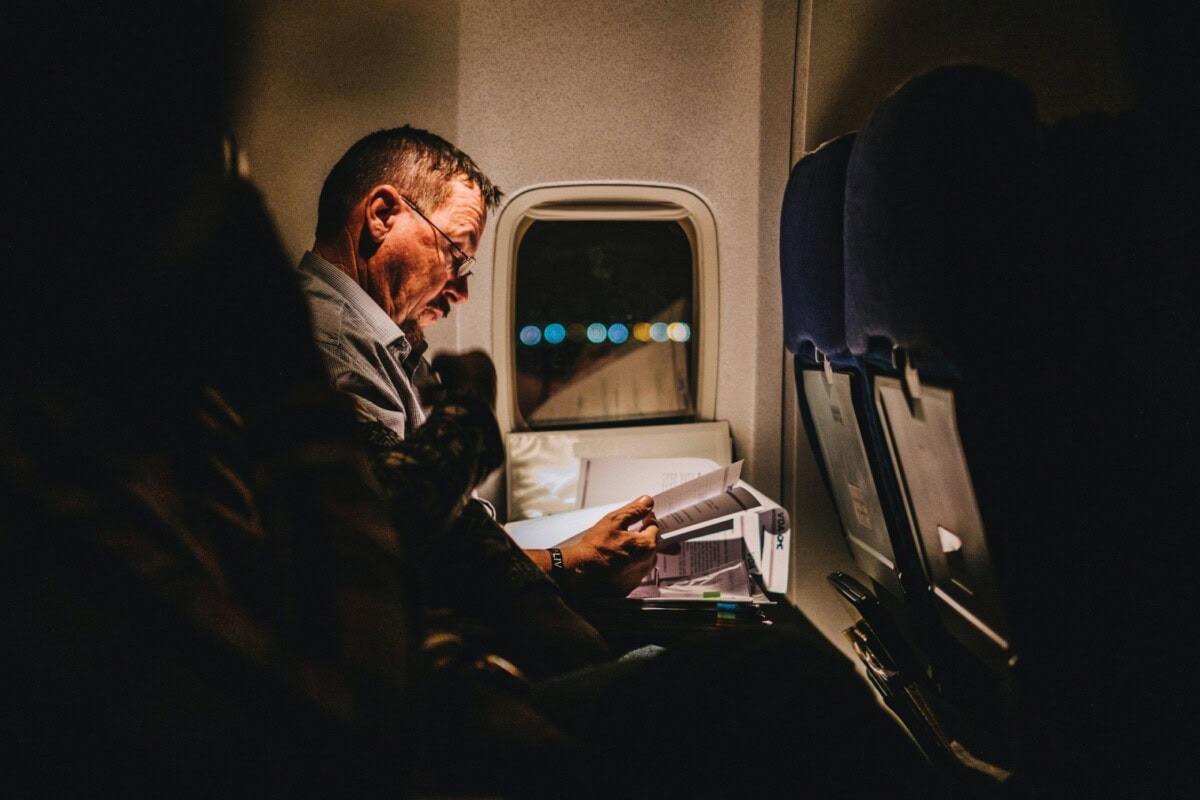

Sometimes, mid-range flights don’t offer in-flight entertainment systems, and even when they do, it may not be to your liking. To be prepared, make sure you have your devices loaded up with downloaded movies, TV shows, podcasts, books, or music that you enjoy. That way, you’ll have something to keep you entertained during the flight.
Remember to charge your devices fully before your departure and pack headphones—preferably noise-canceling ones for an immersive experience.
Bring Your Own Snacks
Air travel doesn’t have to disrupt your meal pattern if you plan ahead. Airport eateries often come with a hefty price tag and limited variety, so packing your own snacks is a smart and healthier alternative.
The TSA suggests including solid food items like protein bars, dried fruits, and nuts in your carry-on. These snacks require no refrigeration, are easy to pack, and provide a nutritious boost whenever hunger strikes thousands of feet in the air.
Take Stretch Breaks on Long Flights
Being confined to an airplane seat for extended periods can leave anyone feeling cramped and restless. On long-haul flights, it’s crucial to get up from your seat to stretch and walk around occasionally. This will not only improve circulation but also stave-off discomfort and stiffness.
Simple in-seat stretches for your legs, arms, and back can contribute significantly to your inflight comfort and well-being. Most airlines encourage periodic movement, so don’t hesitate to take those stretch breaks in the aisle and stay nimble during your long-distance travels.
By keeping these tips in mind, you can transform your first airborne voyage into a smooth and enjoyable part of your exciting travel adventure.
Dealing with Flight Delays and Changes
When embarking on a journey, especially by air, encountering the unforeseen is almost a rite of passage. Delays, flight changes, and cancellations can be frustrating obstacles, but with the right knowledge and preparation, you can navigate these issues with minimal stress. Here’s how to manage potential air travel disruptions:
Consider Purchasing Travel Insurance
Travel can be unpredictable, and that’s where travel insurance comes into play. Investing in a comprehensive insurance policy for your trip provides a safeguard against a range of possible hiccups. Whether you’re facing a flight delay, cancellation, or even an emergency medical situation, travel insurance has got you covered.
The best travel insurance companies offer a wide range of plans to fit your traveling style and your budget. It doesn’t have to be expensive!
Stay Updated with the Flight Status and Any Changes
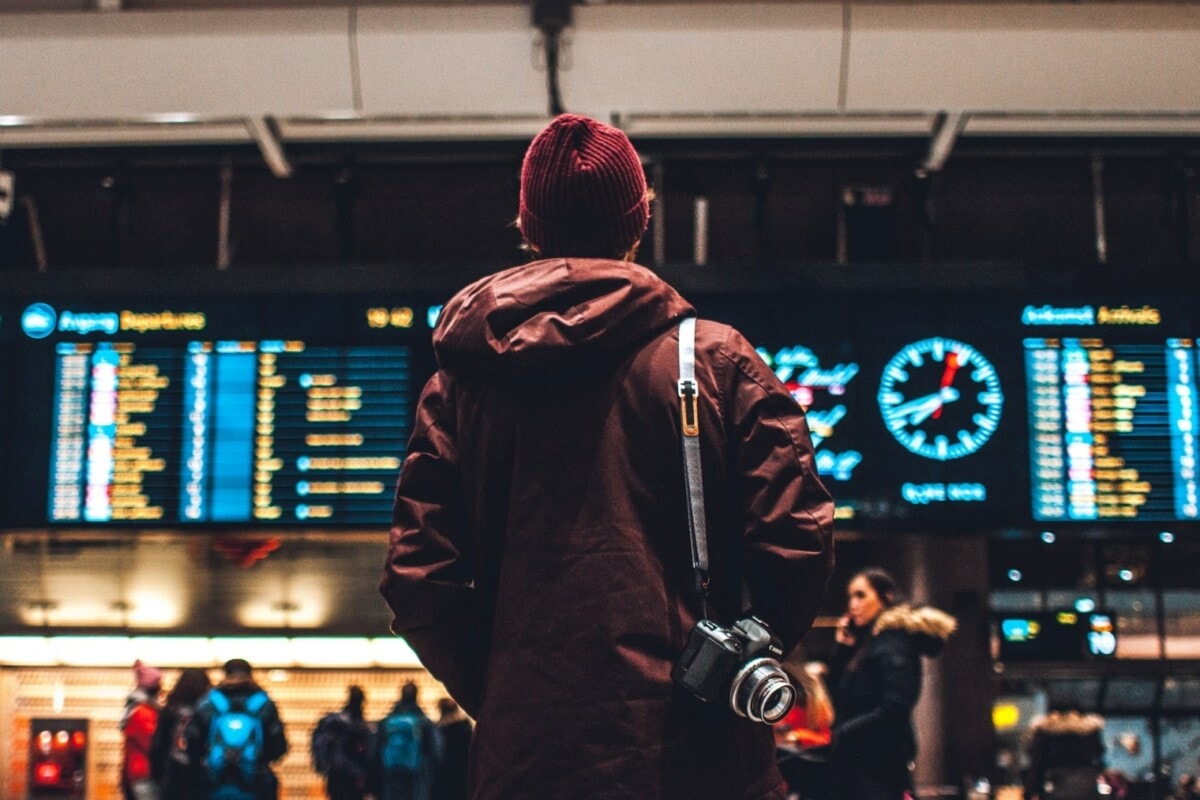

As a first-time flier, it’s important to stay in the loop about your flight’s status. Luckily, airlines make it easy for you by providing updates on delays, cancellations, and gate changes. You can stay informed both at the airport and through their handy mobile apps.
Keep an eye on the departure screens, listen for announcements, and regularly check your phone for updates. This proactive approach allows you to stay one step ahead, ready to adjust your plans promptly if any changes occur. It also minimizes the risk of missed connections or surprise last-minute gate changes that can add unnecessary stress to your travel experience.
Understand Your Rights in Case of Flight Delays
Flight delays can be more than just a time-waster; they can disrupt your entire itinerary. Knowing your rights is key when faced with these situations. Should you miss your flight due to a delay for which the airline is responsible, they’re often obligated to rebook you at no additional cost.
This can also include meal and hotel vouchers if you’re facing an overnight delay. Every airline has its own policies, so it’s a good idea to familiarize yourself with them before your trip.
Stay Calm and Patient
Dealing with flight disruptions can definitely be frustrating, even for experienced travelers. But it’s important to remember to stay calm and composed throughout the process.
Even if something goes wrong with your flight, getting stressed out or losing your temper isn’t going to help anything. You know what they say: keep calm and carry on.
